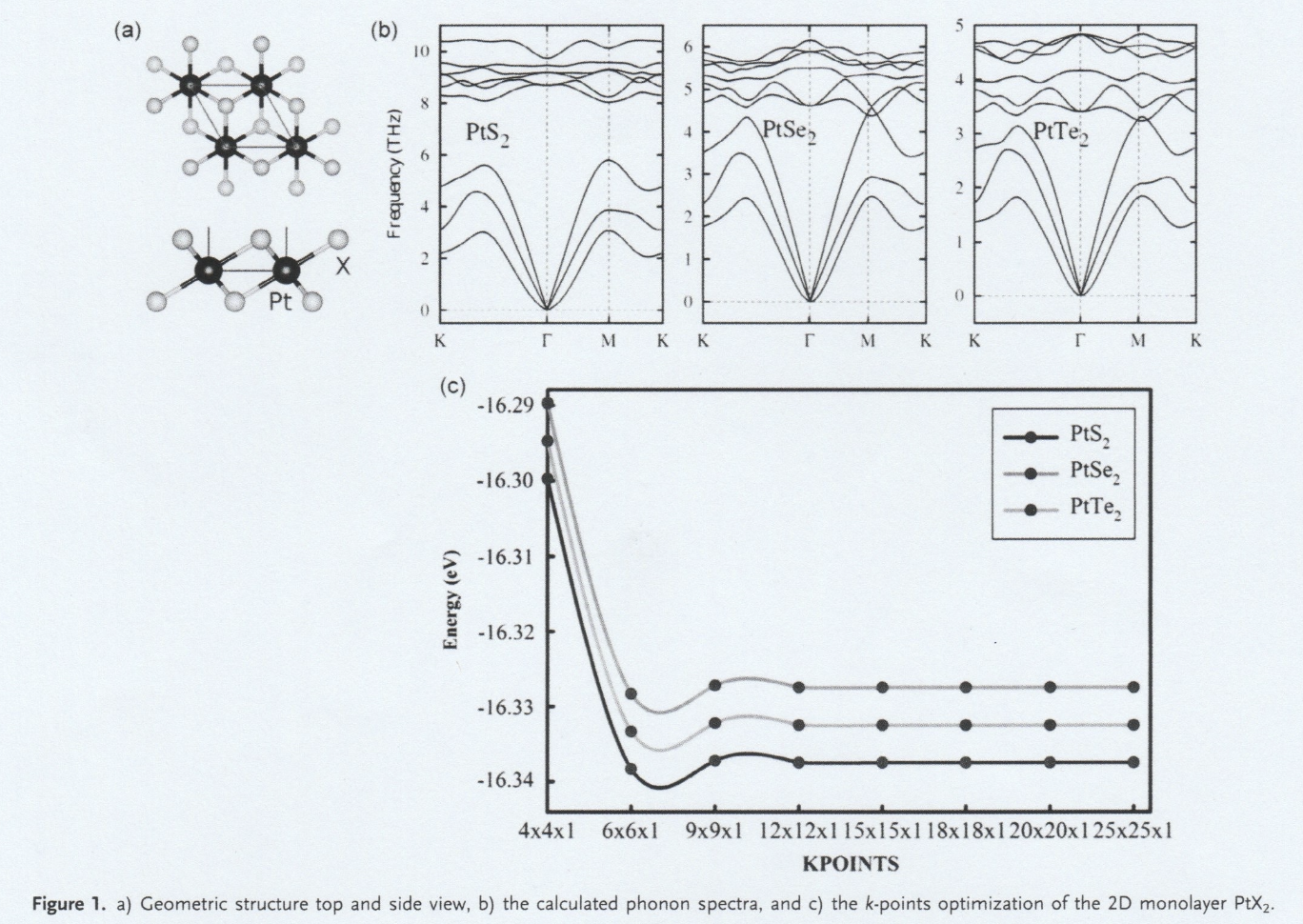Back To Listings


- First authors: Hafiza Sumaira Waheed
- Corresponding authors: Hamid Ullah
- Whole authors: Hafiza Sumaira Waheed, Hamid Ullah, Young-Han Shin, Yousef Mohammed Alanazi
- Authors from M3L: Hamid Ullah, Young-Han Shin
Using density functional theory, the electronic and optical properties of monolayer platinum dichalcogenides (PtX2) are calculated. It is observed that PtS2, PtSe2, and PtTe2 have indirect bandgap of 2.70, 1.94, and 0.82 eV, respectively, indicating their potential in light harvesting. According to the calculated absorption spectra, PtX2 (X = S, Se, Te) absorbs the light extremely well in the visible range (300–700 nm), implying potential as third-generation solar absorber in tandem configuration. The calculated device absorption efficiency increases above 90% at smaller wavelengths (300–350 nm). As a result, strong absorption across the entire light spectrum, from visible to UV, is exhibited. Interestingly, the top cell in tandem architecture requires a wider bandgap and strong device absorption efficiency, and these conditions are perfectly fulfilled by the materials PtS2 and PtSe2. The narrower gap (0.82 eV) and strong absorption of PtTe2 make it an excellent candidate for bottom cell in tandem architecture. Furthermore, it is observed that PtX2 family is useful for oxidizing H2O into O2 but fails to reduce H+ to H2. Thus, suitable bandgap, photocatalytic property for splitting water, and strong absorption efficiency make PtX2 an efficient candidate for application in optoelectronic devices, photocatalysis, and solar cells.

